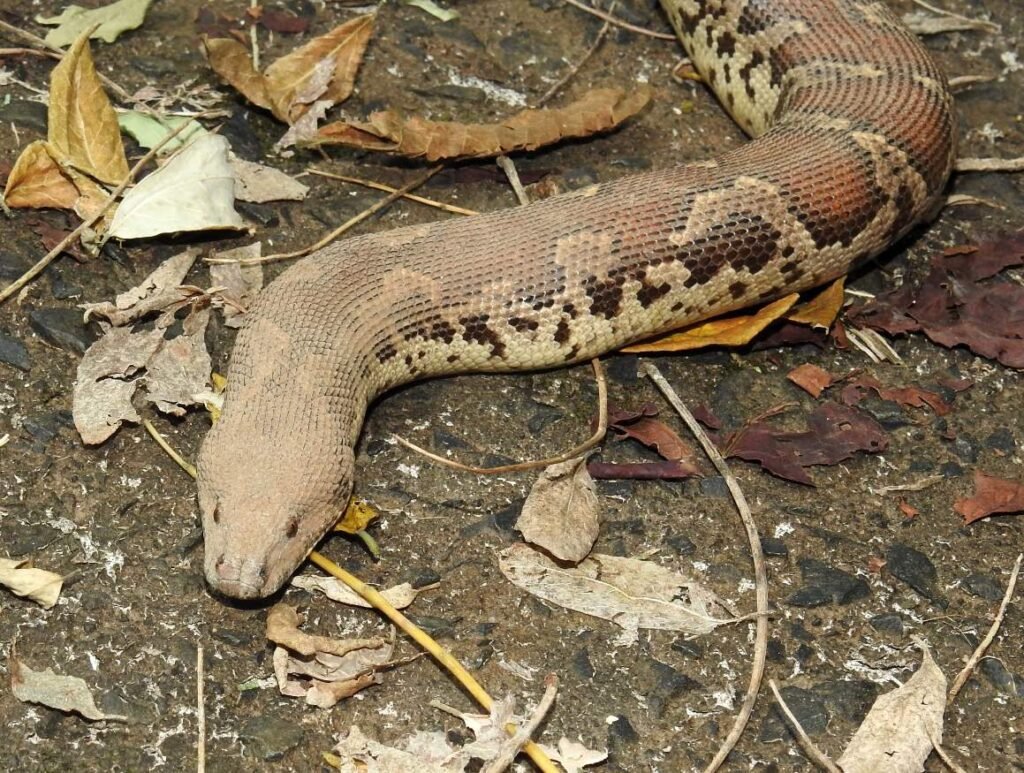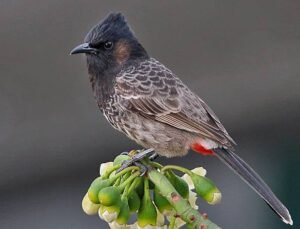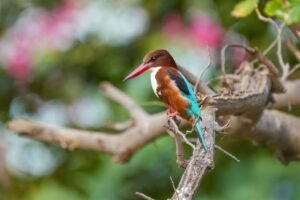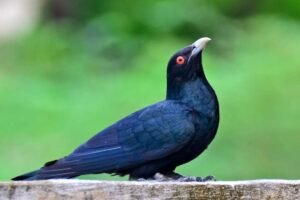Introduction to the Sand Boa Snake
The Common Sand Boa Snake is one of nature’s most fascinating reptiles, renowned for its distinctive appearance, gentle nature, and unique way of life beneath the surface of sandy soils. This snake species, often underestimated due to its non-venomous nature, plays an essential role in maintaining the ecological balance. Sand Boas are harmless to humans, making them particularly intriguing to snake enthusiasts and herpetologists alike.
At WildlifeNest.com, our mission is to bring forward the lesser-known yet critically important species like the Sand Boa, shedding light on their existence, behavior, and contribution to biodiversity.
Common Sand Boa Snake

Species Profile of Sand Boa Snake
| Attribute | Details |
|---|---|
| Snake Name | Common Sand Boa Snake |
| Scientific Name | Eryx johnii |
| Wildlife Protection Act (WLPA) | Schedule IV |
| Regional Names | Hindi: माथु, चिट्टी, मिटटीवाला सांप, बेल्हा Kannada: ಮರಳುಹಾವು Marathi: दुर्क्या घोणस, करकर्या, फोर्स, मातीखावा साप, फुप्ती, फुर्स, मालन, पालेमुंडो Malayalam: ഇരുതലമൂരി, മണ്ണൂളിപ്പമ്പു, മണ്ണുണ്ണിപ്പമ്പു, പയ്യനിപ്പമ്പു, ഇരുതലൻ മണ്ണൂളി Gujarati: ભમફોડી, દરઘોઈ Bengali: বালুবোরা Odia: ବାଲି ବୋଆ Tamil: மண் மலைப்பாம்பு |
| Physical Description | Stocky body, small head, short tail, usually orange-brown with dark patches |
| Habitat | Dry, sandy soils, scrublands, arid zones |
| Diet | Rodents, small birds, lizards |
| Behaviour | Nocturnal, fossorial (burrowing), docile |
| Venomous or Non-Venomous | Non-Venomous |
| Venom Type | Not applicable |
| Venom Effects on Prey | Constriction-based killing |
| Venom Effects on Humans | No venom; not harmful |
| Common or Rare Species | Common in parts of India, rare in urban areas |
| Life Span | Up to 20 years in captivity |
| Mating & Reproduction | Ovoviviparous (give birth to live young); breeds during monsoon |
Introduction to Snakes of Sand Boa Snake
General Characteristics and Anatomy
The Sand Boa Snake is a small to medium-sized snake, characterized by a cylindrical, thick body and a blunt head, often confused with its tail. Their cryptic coloration helps them remain hidden in sandy environments. Unlike many snakes, they are relatively sluggish and rely on stealth and ambush techniques rather than speed. Their eyes are small and placed on the sides, adapted for a life spent largely beneath the ground. Their scales are smooth, aiding in burrowing.
The Role of Snakes in the Ecosystem
Snakes like the Sand Boa are essential players in the food chain, acting as both predators and prey. By controlling populations of rodents and insects, they help maintain agricultural balance. Without snakes, pest numbers would skyrocket, damaging crops and spreading diseases. Moreover, as prey, they are a food source for larger predators like birds of prey and mongooses.
Common Myths and Misconceptions about Snakes
Unfortunately, myths surround snakes across cultures. The Sand Boa Snake, for instance, is often believed to possess supernatural powers or bring fortune, leading to illegal capture and trade. Another dangerous misconception is that all snakes are venomous and harmful—this couldn’t be further from the truth. Understanding and education are key to correcting these myths and ensuring the survival of these misunderstood creatures.
Habitat and Distribution
Sand Boas are typically found in dry, arid, and semi-arid regions, preferring loose, sandy soils where they can easily burrow. These habitats include scrublands, dry deciduous forests, agricultural fields, deserts, and rocky plains. Their cryptic and fossorial nature means they’re rarely seen above ground unless hunting or basking.
Geographically, they are native to India, Pakistan, Iran, and parts of the Middle East. In India, they are primarily found in Rajasthan, Maharashtra, Gujarat, Tamil Nadu, and parts of Central India.
Habitat & Distribution Table
| Habitat Type | Regions Found |
|---|---|
| Sandy Deserts | Rajasthan, Iran |
| Dry Scrublands | Gujarat, Maharashtra |
| Agricultural Fields | Tamil Nadu, Karnataka |
| Rocky Plains & Forest Edges | Central India, Telangana, Andhra Pradesh |
| International Range | Pakistan, Iran, Afghanistan |
Snake Behaviour
Hunting and Feeding Habits
Sand Boa Snakes are ambush predators. They burrow themselves beneath the soil with only their head slightly exposed and wait for prey like mice, lizards, or small birds. Once within reach, they strike with surprising speed, coil around the prey, and use constriction to suffocate it. Their metabolism is slow, allowing them to survive on fewer meals.
Mating and Reproduction
Breeding occurs during the monsoon season, a time when males actively seek out females. The Sand Boa is ovoviviparous, meaning the eggs hatch within the mother’s body, and she gives birth to live young—typically 6 to 14 at a time. Newborn Sand Boas are fully independent and burrow into the soil soon after birth.
Defence Mechanisms
Though non-venomous, the Sand Boa has fascinating defense mechanisms:
- Mimicry: The blunt tail resembles its head, confusing predators.
- Burrowing: Quickly escapes danger by disappearing into the sand.
- Stillness: Remains motionless, blending into the environment.
First Aid and Medical Treatment for Sand Boa Snake Bites
Since Sand Boa Snakes are non-venomous, their bites are not medically significant. However, in the rare event of a bite:
- Clean the wound with soap and water.
- Apply antiseptic to prevent infection.
- Avoid panic, as their bite does not inject venom.
- Seek medical attention if pain, swelling, or allergic reaction occurs.
Global Impact of Sand Boa Snake Bites
Sand Boa bites are extremely rare and have no significant global impact. They are shy and non-aggressive, often avoiding human interaction. Most injuries related to them stem from mishandling or provocation by humans, especially during illegal pet trade activities.
If You Encounter a Snake on Your Property
Remain Calm and Assess the Situation
Avoid sudden movements. Most snakes, including Sand Boas, are not aggressive unless provoked.
Ensure Safety
Keep children and pets away. Stay at a safe distance and do not try to handle the snake.
Identify the Snake (If Possible)
Note its color, size, and behavior. Use online guides or apps to identify whether it’s venomous.
Contact Professional Help
Call local wildlife rescue or forest department. They are trained to handle and relocate snakes safely.
Prevent Future Encounters
Seal holes, clear debris, and maintain clean surroundings to discourage snake habitation.
Educate Yourself and Others
Awareness helps reduce fear. Learning about snakes contributes to their conservation.
Tips for Snake Enthusiasts
How to Safely Observe Snakes in the Wild
- Maintain distance—never corner a snake.
- Wear protective boots in snake zones.
- Use flashlights at night in dry areas.
- Avoid disturbing burrows or logs.
Tips for Aspiring Herpetologists
- Study reptile behavior from credible sources.
- Volunteer with wildlife organizations.
- Learn basic snake identification and first aid.
- Practice ethical wildlife photography.
Maps and Charts Showing Snake Populations Around the World
While Sand Boas are primarily found in South Asia and parts of the Middle East, global snake distribution maps show dense populations in tropical zones across Asia, Africa, South America, and Australia. Snakes are less common in colder regions such as Northern Europe and Canada.
Interesting Facts About the Sand Boa Snake
- They can survive for months without food, especially during harsh summers or drought.
- Their burrowing style leaves no trace, making them almost invisible predators.
- Despite being harmless, they are often killed due to myths about possessing two heads or magical powers.
- Sand Boas are among the few snakes that give birth to live young, an adaptation to dry environments.
- They are popular in illegal pet trades due to their calm nature and exotic looks.
- Sand Boas have a remarkable ability to thermoregulate, spending time underground to avoid extreme surface temperatures.
- Some species of Sand Boas can change their skin tone slightly to blend better with their environment.
Frequently Asked Questions (FAQs) About Sand Boa Snake
1. Is the Sand Boa Snake dangerous to humans?
No, the Sand Boa Snake is non-venomous and poses no threat to humans. It’s a shy and reclusive snake that prefers to burrow under sand or loose soil rather than confront humans. If spotted, it’s best to observe it from a safe distance and avoid handling.
2. What does the Sand Boa Snake eat?
Sand Boas are carnivorous. Their diet mainly includes small mammals, lizards, birds, and occasionally amphibians. They are ambush predators and often wait patiently beneath the sand to strike at unsuspecting prey.
3. Where are Sand Boa Snakes commonly found?
Sand Boas are found in India, Pakistan, parts of Africa, and the Middle East. In India, they are commonly seen in Rajasthan, Gujarat, Maharashtra, and Madhya Pradesh, usually in dry, sandy, or semi-arid habitats.
4. Are Sand Boas protected under Indian law?
Yes. In India, the Sand Boa is protected under the Wildlife Protection Act (WLPA), 1972, listed in Schedule IV. Capturing or trading Sand Boas is illegal and punishable by law.
5. How big can a Sand Boa grow?
Adult Sand Boas typically grow up to 2 to 3 feet (60 to 90 cm) in length. Females are usually larger than males. Their stubby and cylindrical body helps them navigate underground easily.
6. Can I keep a Sand Boa as a pet?
While Sand Boas are kept as pets in some parts of the world due to their calm nature, keeping them is illegal in India due to wildlife protection laws. We strongly discourage keeping wild animals as pets.
7. What is the lifespan of a Sand Boa Snake?
In the wild, Sand Boas can live up to 15 to 20 years, and even longer in captivity under proper care. They are known for their slow metabolism, which contributes to their long lifespan.
8. How does the Sand Boa reproduce?
Sand Boas are ovoviviparous, meaning the eggs hatch inside the mother’s body, and she gives birth to live young. A female can give birth to 5 to 20 baby snakes in one litter.
9. What are some interesting behaviors of the Sand Boa Snake?
Sand Boas are fossorial snakes, which means they love to dig and live underground. They often remain buried in sand with only their eyes peeking out, waiting for prey. Their movement is also unique—they burrow using sidewinding motion in loose sand.
10. What should I do if I see a Sand Boa in my garden or house?
Don’t panic! The Sand Boa is harmless. Do not try to touch or catch it. Instead:
- Stay calm and keep a safe distance.
- Contact local wildlife authorities or snake rescue teams.
- Avoid blocking its escape route.
- Ensure your home’s surroundings are clean to avoid attracting rodents, which attract snakes.
11. Why is the Sand Boa called a “Two-Headed Snake”?
The Sand Boa’s short, rounded tail resembles its head, which often confuses predators. This adaptation has earned it the nickname “Two-Headed Snake” in local folklore, but rest assured—it only has one head!
12. Is the Sand Boa active during the day or night?
Sand Boas are nocturnal, meaning they are active at night. During the daytime, they remain hidden underground or beneath rocks to avoid the heat and predators.
13. Are there any superstitions associated with the Sand Boa?
Yes, unfortunately. In India, the Sand Boa is often subject to illegal poaching due to false beliefs that it brings luck, wealth, or healing powers. These are baseless superstitions, and harming or trading this snake is illegal and unethical.
14. How can I help conserve Sand Boas?
You can help by:
- Spreading awareness about their harmless nature.
- Reporting illegal trade or capture to authorities.
- Supporting wildlife conservation efforts.
- Educating others to respect reptiles and their ecological role.
15. Why is the Sand Boa important to the environment?
Sand Boas help control rodent and insect populations, playing a vital role in maintaining balance in the ecosystem. Like all snakes, they are important indicators of a healthy environment.
Related Snake Species – Explore More on Wildlife Nest
| Snake Article | Link |
|---|---|
| Indian Rock Python | Read Article |
| Two-Step Snake (Wolf Snake) | Read Article |
| Slender Coral Snake | Read Article |
| Green Vine Snake | Read Article |
| Common Cat Snake | Read Article |
| Banded Krait Snake | Read Article |
| King Cobra | Read Article |


